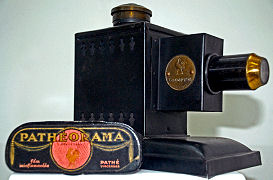|
|
Filmstrip Lanterns. Definition of filmstrip: A long piece of film used for showing a series of pictures on a screen individually and not as a movie. |
|
The first lantern for projecting reflected images from paper rolls was patented by the German magic lantern manufacturer J. Bischof in 1879. From c. 1890 some magic lanterns were produced for the use of translucent celluloid filmstrips. |
|
France c. 1890. Maker unknown. Probably the first magic lantern fitted for a flexible, rollable strip of images. The embossed figures on this highly decorated lantern show characters from the Commedia dell'Arte and images from phantasmagoria lantern shows. The strip holder containing the filmstrip should be placed inside the lantern and was operated by a little crank that stuck out at the side of the lantern house. The filmstrip appears to be of celluloid, bound with cloth edges. The images are identical to those used on glass strips of the period and tell the story of 'Peau dáne'. (Image: Ich sehe was du nicht siehst!, Werner Nekes.) |
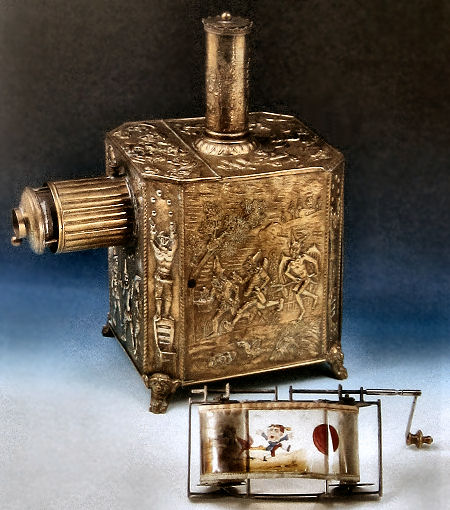 |
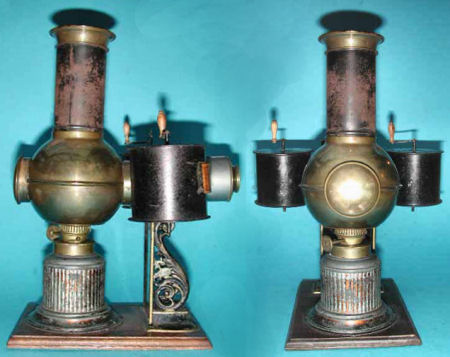 Ernst Plank, c. 1895. |
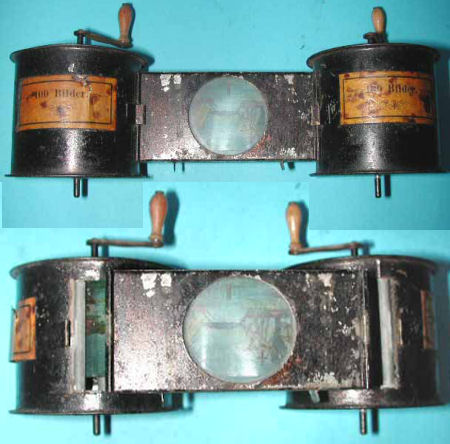 |
| The German magic lantern manufacturer Ernst Plank made this small lantern for a 35mm horizontal celluloid filmstrip of 100 images. The strip is placed within a pair of canisters that could be removed from the lantern entirely. When the handles are turned the strip moves on. The images are varied and show ship wrecks , circus acts, snow scenes, jungles, volcanoes etc. The size of the lantern's wooden base is 17 x 12 cm. | |
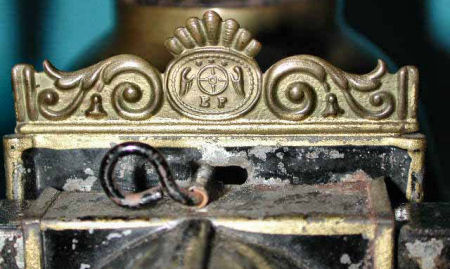 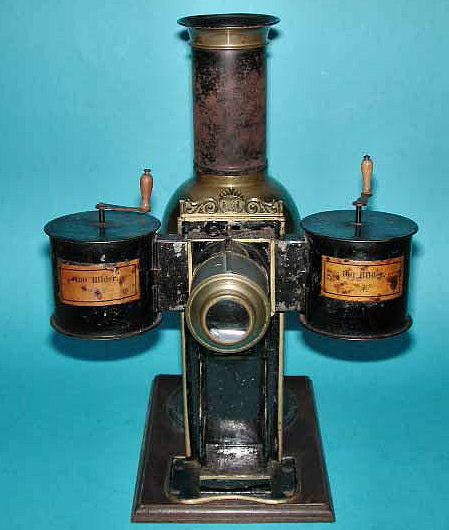 |
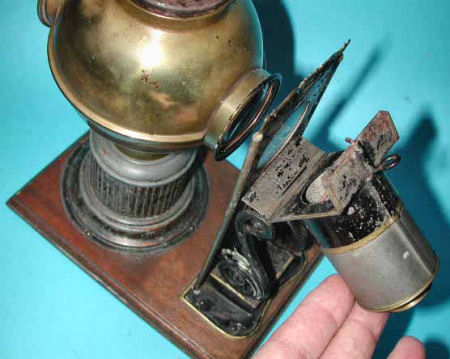 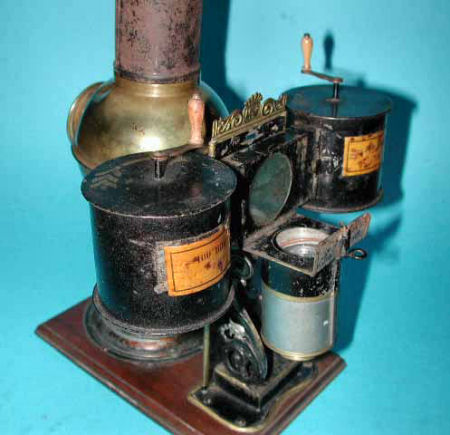 |
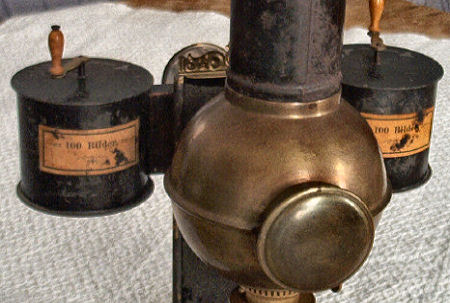 |
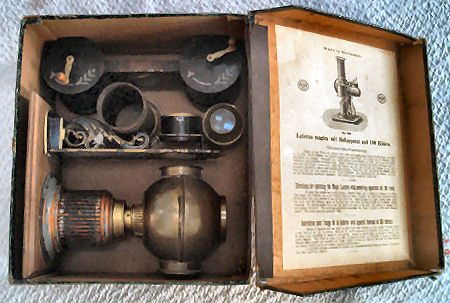 |
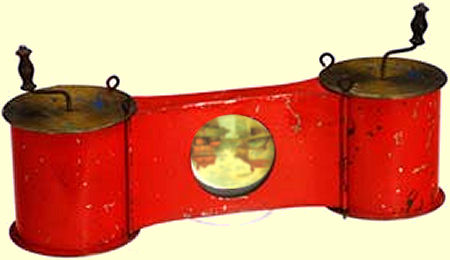 |
A similar
canister system. It is made of red lacquered brass, c. 22 cm long and consists of two cylinders
with a handle in the top of each, to wind the strip of pictures through the 'window section'. The section in the middle
has a circular hole back and front with glass and is held onto the drums by four long pins.
|
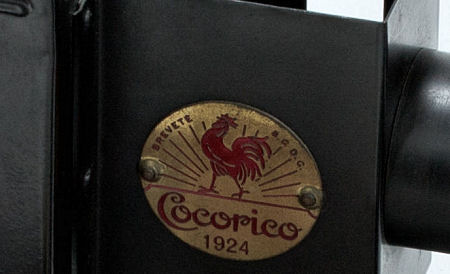 |
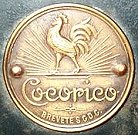 Pathé Cocorico, France, from 1923. Small pressed-steel projector with electric bulb illuminant for projecting filmstrips of the Pathéorama system. (Pathé's trade mark is a cock; Cocorico means: cock-a-doodle-doo.) |
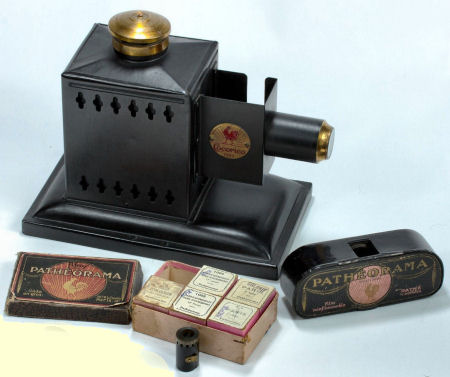 |
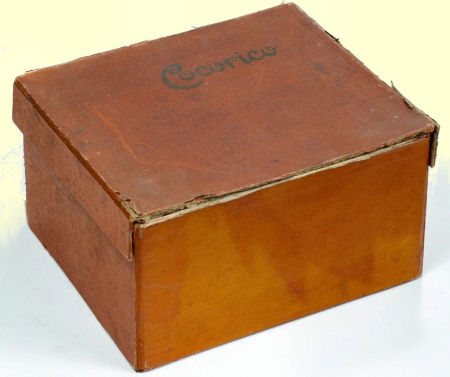 |
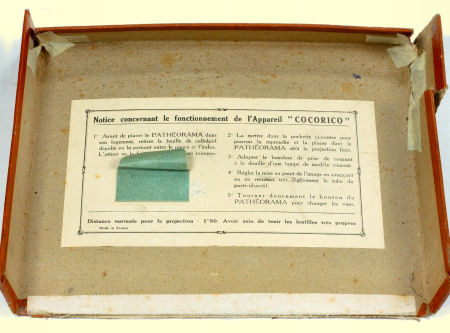 |
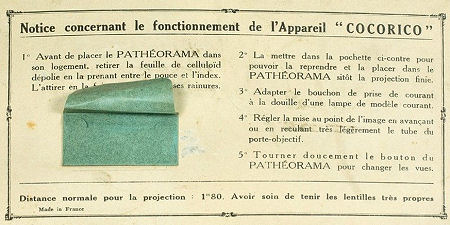 A manual is glued at the inside of the lid of the cardboard box. |
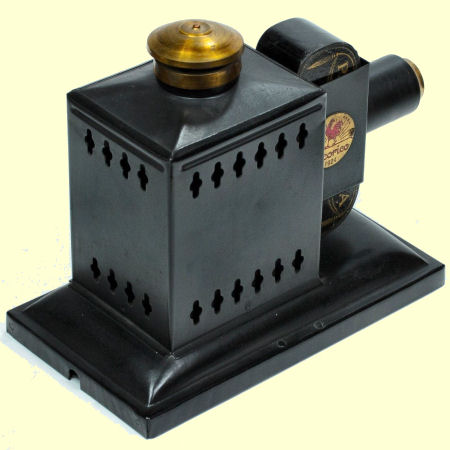 |
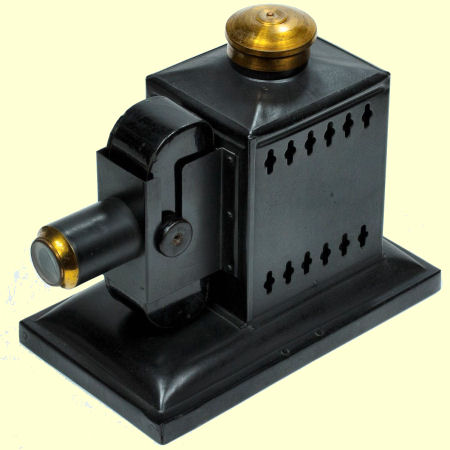 |
|
Un
Cocorico dans la famille, c'est la joie dans la maison. A Cocorico in the family brings lots of joy in house. |
|
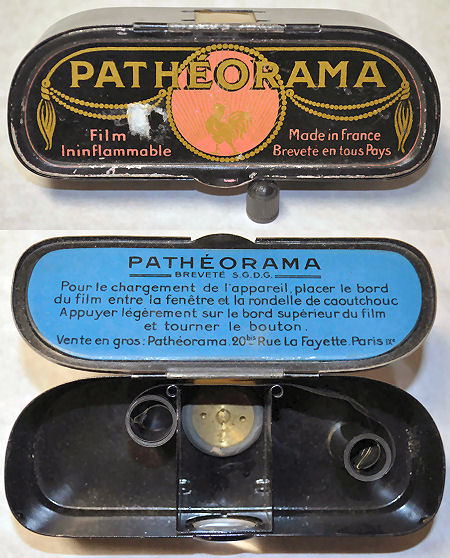 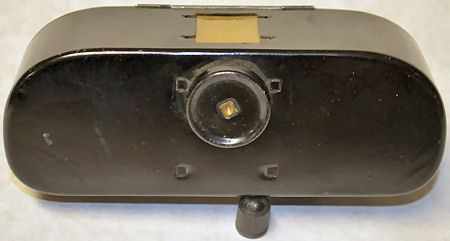 |
 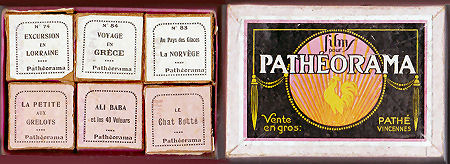 |
|
|
|
 |
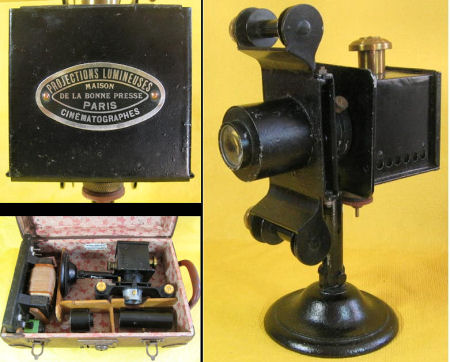 |

French filmstrip projector made by Maison de la Bonne Presse, Paris. Projector and accompanying transformer are packed up in a suitcase measuring 38 x 25.5 cm, supplied with a small mark sheet. |
|
 |
 Filmstrip projector made by Bing Werke, Nuremberg, Germany, c. 1925. The sizes of this striking lantern are roughly: length 26 cm, height 21 cm. |
 |
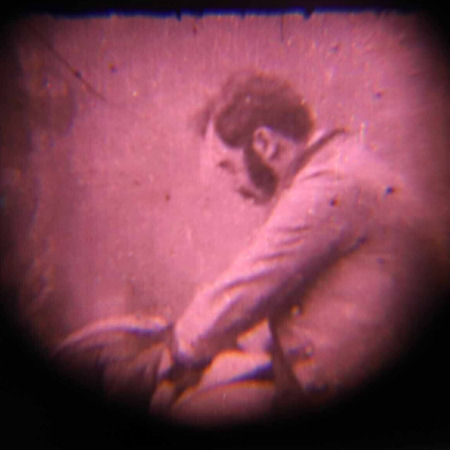 |
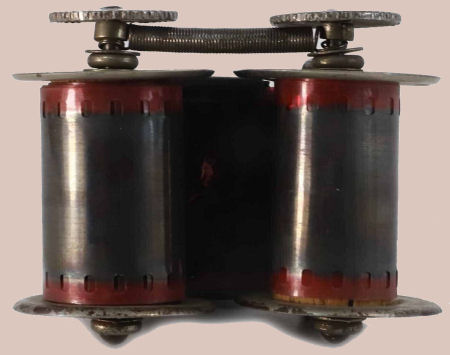 |
Metal
film strip viewer, circa 1900. Metal viewer with which for that time very exciting images could be viewed. The viewer is 8 cm high. Included was a 35mm celluloid film containing 40 very naughty photos. The German titles indicate the origin of the images on this viewer: Hotelerlebnisse eines Reisenden, Faunt und Gretchen 1 Teil und 2 Teil. |
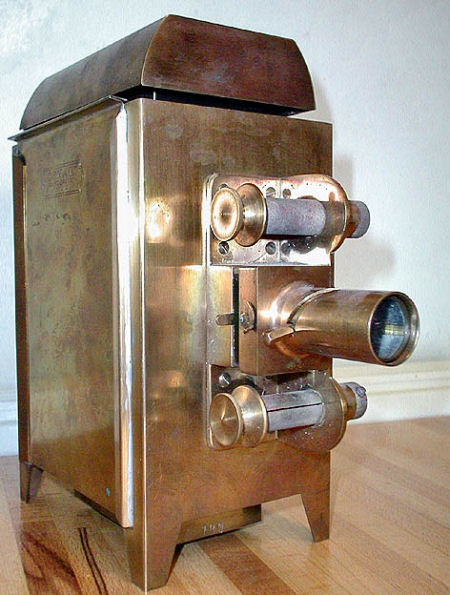 ORNAK projector, Poland, c. 1900 Solid brass filmstrip projector, made in Warszawa, Poland. It can be used to project glass slides or pictures on film and measures 10" (25 cm) high. Photo: ©Pierre Patau, antiquetoysandgames.com. |
By the late 1930s there were quite a lot of filmstrip projectors available from several European manufacturers. These projectors were suitable for projection of images arranged on the filmstrip either horizontally (24 x 36mm) or vertically (24 x 18mm). For this purpose some projectors were provided with a combined lens holder/reel system that could be canted 90 degrees. Filmstrip projectors were widely used into the 1970s and later.  Film strips in cardboard, plastic and tin boxes. Next page shows a number of relative modern filmstrip projectors from c. 1940. |
| |
©1997-2024 'de Luikerwaal' All rights reserved. Last update: 02-06-2024. |
